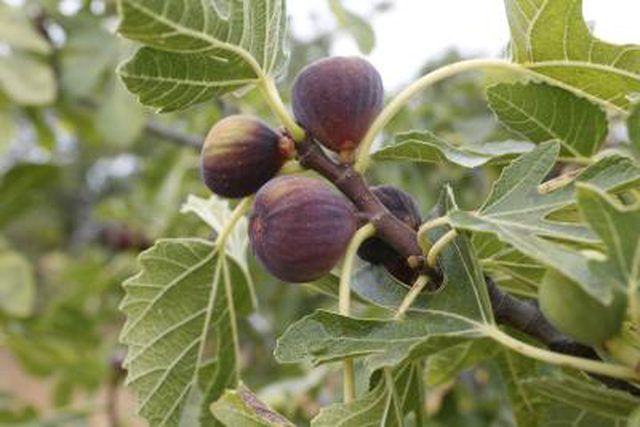Bulbs
Flower Basics
Flower Beds & Specialty Gardens
Flower Garden
Garden Furniture
Garden Gnomes
Garden Seeds
Garden Sheds
Garden Statues
Garden Tools & Supplies
Gardening Basics
Green & Organic
Groundcovers & Vines
Growing Annuals
Growing Basil
Growing Beans
Growing Berries
Growing Blueberries
Growing Cactus
Growing Corn
Growing Cotton
Growing Edibles
Growing Flowers
Growing Garlic
Growing Grapes
Growing Grass
Growing Herbs
Growing Jasmine
Growing Mint
Growing Mushrooms
Orchids
Growing Peanuts
Growing Perennials
Growing Plants
Growing Rosemary
Growing Roses
Growing Strawberries
Growing Sunflowers
Growing Thyme
Growing Tomatoes
Growing Tulips
Growing Vegetables
Herb Basics
Herb Garden
Indoor Growing
Landscaping Basics
Landscaping Patios
Landscaping Plants
Landscaping Shrubs
Landscaping Trees
Landscaping Walks & Pathways
Lawn Basics
Lawn Maintenance
Lawn Mowers
Lawn Ornaments
Lawn Planting
Lawn Tools
Outdoor Growing
Overall Landscape Planning
Pests, Weeds & Problems
Plant Basics
Rock Garden
Rose Garden
Shrubs
Soil
Specialty Gardens
Trees
Vegetable Garden
Yard Maintenance
How to Grow Fig Trees in the Pacific Northwest
How to Grow Fig Trees in the Pacific Northwest. Although fig trees (*Ficus spp.*) are associated with the Mediterranean area, several cold-hardy varieties of the common, edible fig (*Ficus carica*) can be grown successfully in the U.S. Pacific Northwest. The growing conditions there vary between the areas east of the Cascade Mountains that have...

Although fig trees (Ficus spp.) are associated with the Mediterranean area, several cold-hardy varieties of the common, edible fig (Ficus carica) can be grown successfully in the U.S. Pacific Northwest. The growing conditions there vary between the areas east of the Cascade Mountains that have cold winters and hot summers and the areas west of the Cascades that have mild winters and cool summers.
Providing Proper Sunlight, Soil and Climate
Common fig trees can be pruned to bush form or pruned as trees with multiple trunks. If you grow them as bushes, then space them 10 feet apart; if you have enough bushes for rows, set the rows 15 feet part. Space trees 15 to 20 feet apart with 20 feet between rows.
Common figs do best in well-drained soil in a site exposed to full sun. Growing the trees in the open is fine east of the Cascades, but their fruits ripen better in the cool summers west of the mountains when they are planted against a wall-facing south or west.
Fig trees have shallow roots that spread at least as wide as their branches, and their fruits make a mess when they fall. So let their likely canopy width be your guide when planting the trees near buildings.
In mountains or east of the Cascades, pipe insulation wrapped around the trunks of dormant figs helps the trees survive hard winters.
Watering the Trees
Keep the soil moist for young common fig trees until their roots get established. If they donít get enough water, their growth will be stunted and they will die. Common fig trees should get roughly 1 to 1 1/2 inches of water each week during their spring and summer growing periods. They'll likely have to be watered more often east of the Cascades.
Common figs have shallow roots, and applying mulch around the trees' bases helps to conserve soil moisture for the roots. When the trees are water-stressed, their leaves turn yellow and drop, and the trees do not yield fruits.
Fertilizing Them
Spread 1 1/2 ounces of granular, water-soluble, 8-8-8 or 10-10-10 fertilizer evenly on the ground in an 18-inch-wide circle around each spring-planted common fig tree, and water the site well.
Increase the fertilizer amount to 3 ounces in the spring of the second year, and spread it over a 24-inch-wide circle around each tree.
Apply 1/3 pound of the fertilizer per every 12 inches of tree height for each tree that is 3 to 5 years old. Give the application three times each year, in early spring, mid-spring and early summer.
Until a common fig tree reaches its full height for its cultivar, it should grow about 12 inches each year. If it grows less than that, then in spring apply 1 pound of fertilizer for every 1 foot of tree height, using only up to 10 pounds of fertilizer.
It your common figs are not maturing and their fruits are not ripening, then you may be applying too much fertilizer. Stop fertilizing.
Pruning Them
Prune common fig trees as you would a bush with multiple stems. In early spring, when the trees are still dormant, prune their weak and damaged stems. Prune to the ground older wood that does not yield fruits.
In midsummer, pinch the tips of new shoots after they have grown 4 to 6 leaves.
Remove unripe fruits larger than a marble after a hard freeze in late autumn.
Before pruning, sterilize your pruning tools by soaking them for five minutes in a solution that is 1 part household bleach and 3 parts of water. Rinse them with fresh water, and let the air dry them.
Choosing a Suitable Northwest Cultivar
"Brown Turkey" (Ficus carica "Brown Turkey," USDA zones 6 through 9), grows best in full sun and well-drained soil, yielding fruits with purple-brown skin and red flesh when ripe. It grows 10 to 25 feet high and 12 to 15 feet wide.
"Black Mission" (Ficus carica "Mission," USDA zones 7 through 9) grows 20 to 25 feet tall and has a canopy just as wide. It yields sweet, purple-black fruits and is especially suited to areas east of the Cascade Mountains.
"Black Jack" (Ficus carica "Black Jack," USDA zones 7 through 9) grows up to 15 feet tall but can be maintained at 6 feet tall by pruning. "Black Jack" is a prolific yielder of purple-brown fruits.
"Desert King" (Ficus carica "Desert King," USDA zones 5 through 9) is an option for east of the Cascades, along the coast and in the mountains. Although it grows only 4 to 8 feet tall, it yields a large number of deep-green fruits that have sweet, red flesh.